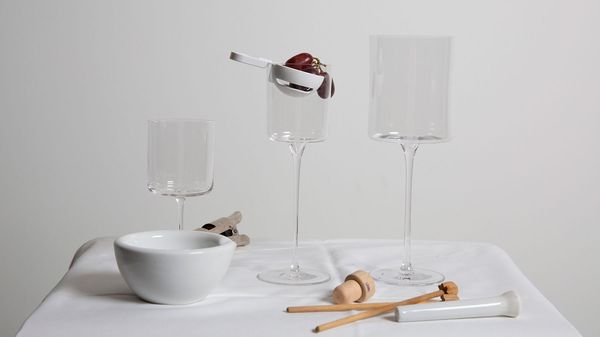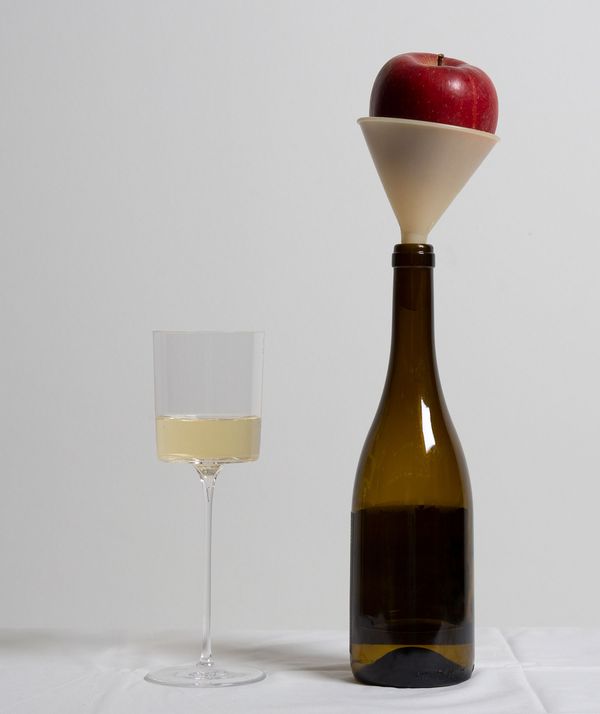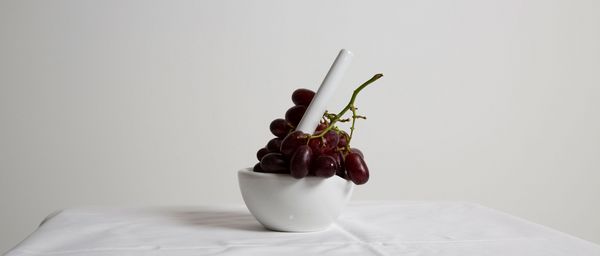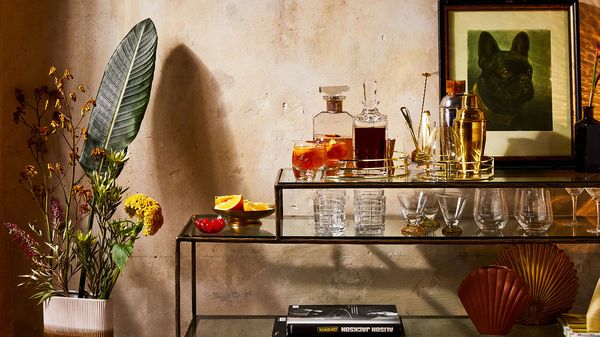
Philipp Kohlhöfer is a well-known columnist and author who likes to explore food topics from a scientific angle. For NEFF he has delved into the secrets of winemaking through self-experimentation.
THE STORY
I don't want to go blind, nor do I want to be an outlaw. And I also don’t want to accidentally poison my daughter. All the same, I still make my own wine. I say these things, because I am very short-sighted. With -6 dioptres, I now have a real problem getting my bearings in the morning. Recently, at a birthday party in Lower Saxony, when the host staggered into the cellar at three o’clock in the morning to serve home-made schnapps, I learned that making your own alcohol is nothing special for normal people. Besides, I like making things myself. I build furniture and sand floors. I paint walls, grow vegetables and try to repair all kinds of things. When you do things yourself, you learn that the meaning of life is not in consuming, but doing. So why not make my own wine?


After all, people have been doing it for thousands of years.
There are theories that our entire cultural history is based around the fact that people wanted to be intoxicated – and only began to grow grain because they needed it for brewing beer. I like the idea – and make it known in my house when the starter set is delivered: a demijohn in which the fermentation process takesplace, wine yeast, salt, a fermentation lock and a tube,the so-called wine siphon, a fining agent to clarify thedrink (nobody needs this; the suspended matter separatesby itself) and a vinometer, an alcohol measuringdevice that looks like a doctor’s syringe. “What is thatgoing to be then?” asks the caretaker where I live, whonever misses a trick and is interested in everything. I say: “I’m involved in the cultural sector.” She says nothing and I add: “I am furthering humanity.”
Make your own wine - How it works.
I do this mainly by doing nothing. After all, the history of winemaking is quickly told. It is mostly a waiting game. But first things first. To begin with, of course, you need the basic ingredient: apples. Because I may live in Hamburg, but I come from Hesse, and you can take the man from Hesse, but you can’t take Hesse from the man, as they say. Furthermore, this means that when it comes to wine, I don’t immediately think of grapes, but Apfelwein – or cider – which is served in a Bembel, a blue earthenware jug. (It is a really fantastic drink that tastes great at any time of the year, chilled in summer, warm in winter, served with ginger, cinnamon and cloves (as a pleasing side effect, you can convince yourself whilst enjoying the drink that getting tipsy is healthy, because it helps to ward off colds. Plus Apfelwein has far fewer calories than beer or wine). To keep the taste as interesting as possible, it is best to buy various apple varieties. As a city dweller, this means buying them from the supermarket by the sack. Around twelve kilograms of apples are needed to make five litres of Apfelwein. They have to be peeled and quartered before being fed into a juicer, because it goes without saying that you can’t do anything with the apples themselves – you need apple juice. Since I do not own a juicer, I spend what feels like the entire day on the phone trying to hunt one down. Even though this somewhat throws a spanner in the works of the process, it also makes the anticipation all the more exciting. Once the juice has finally been made (pro tip: squeeze it through a kitchen towel so that even the smallest of fibres is removed), the real work begins – cleaning. That’s because the demijohn must be sterilised. Brush it out using hot water, rub it down with boiled cloths, then work on it again with the bottle brush. Cleanliness is everything and this clearly applies to every microorganism. There are countless websites dedicated to the subject and they all say that ‘everything has to be fastidiously clean’. The very taste of the finished product depends on it. So I clean. And clean. And keep on cleaning. I work so meticulously that it is a wonder I am not holding shards of glass in my hand at the end of it all.

But that’s all there is to it. The rest quite literally takes care of itself. The only thing you need to do is wait. And of course pour the juice into the demijohn, add the yeast and seal everything with the fermentation lock. The lock is important, because it allows the carbon dioxide that forms during the fermentation process to escape, while also preventing bacteria from entering the demijohn. If the demijohn was simply made airtight, the container would explode sooner or later due to the constantly rising pressure. An Apfelwein grenade, so to speak.

In principle, it is possible to see the wine being created. The yeast bacteria begin to convert the fructose. The resulting alcohol can be seen in the bubbles that rise in the juice. Foam also forms. This lasts a few days and the process is complete after about two weeks. At least it was in my case, but it can supposedly take longer. The general rule is that it is a good sign when bubbles are no longer rising. This means that there is no longer any malic acid in the wine. The yeast has also settled at the bottom by then. So far, so good, except for one small matter: since the process requires room temperature, the demijohn is constantly standing in my kitchen – and thus in my way. Sometimes I move it into the living room, but it is also in the way there. On occasion, I even slide it beneath my pedestal bed, but the soon-to-be wine is then next to the bed linen, which strikes me as somehow ignoble, which is why I soon take it back into the kitchen. The good thing about this, however, is that everyone who visits me can see the wine being made. I brag a little and pretend that it is especially difficult to make the product. All ofthe guests without exception are impressed. Women in particular invite themselves for a tasting – a very pleasing side effect. I therefore briefly toy with the idea of starting a winery business, but quickly dismiss it again.
Not least because the Apfelwein doesn’t taste that good (no, it is not due to the product in general; Apfelwein is lovely). I don’t know what it is due to and I briefly wonder whether I perhaps let too much air into the demijohn and didn’t sufficiently fill it, because the yeast bacteria only use the sugar of the apple juice for fermentation if there is no oxygen available. If this is the case, you accidentally make vinegar instead of wine (which may not really be suitable as a drink, but it will clean any drain when mixed with baking powder). Yet it doesn’t taste like vinegar either; the drink is just incredibly sour. I read the instructions again, but there aren’t really that many to follow. I reckon I did everything right. Ultimately, I think the apples must have been bad. Or it was just meant to be this way.
Fortunately, I am a native of Hesse and as such, I know that sour apple wine can be made delicious simply by adding lemonade.



